
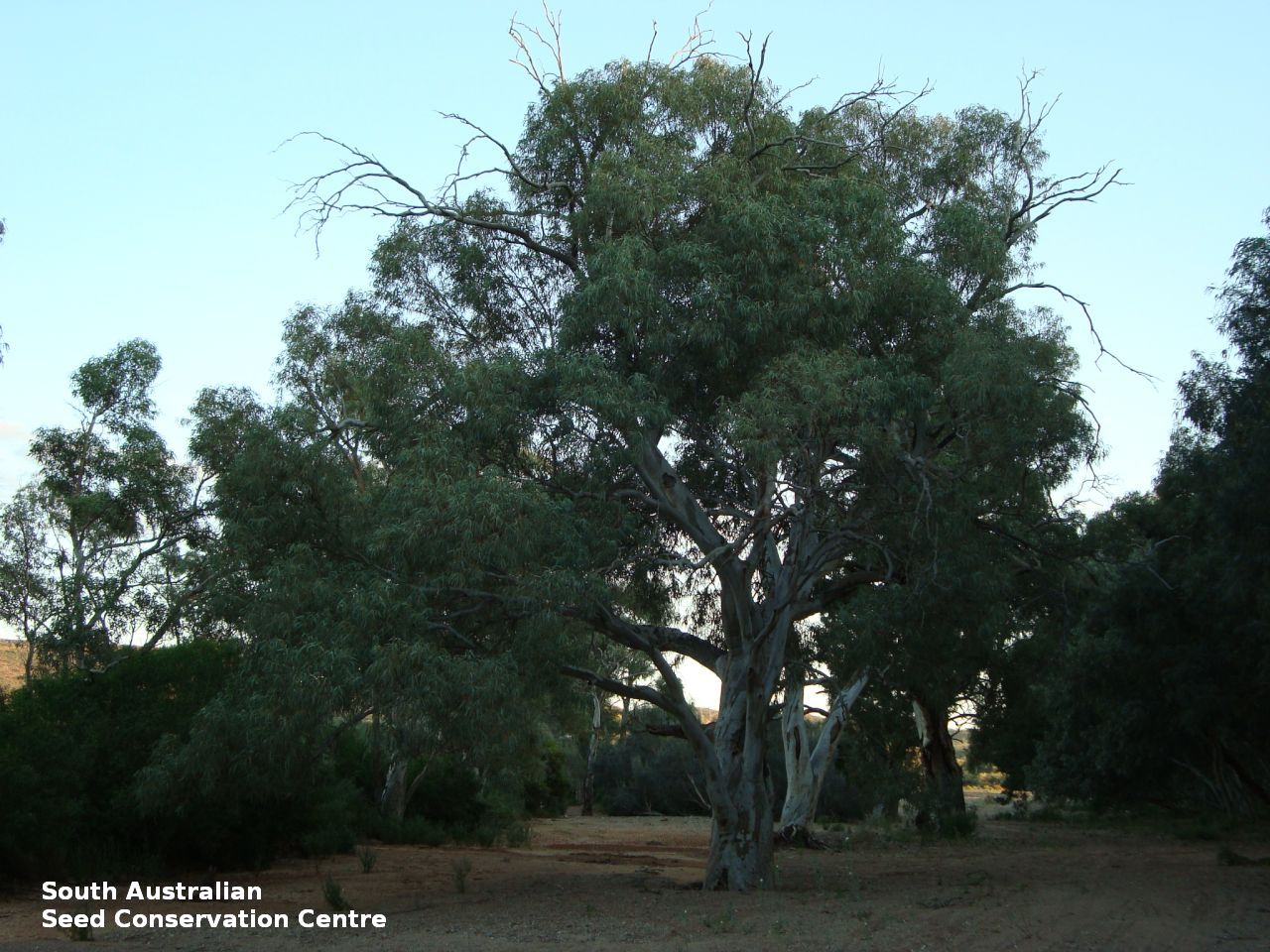

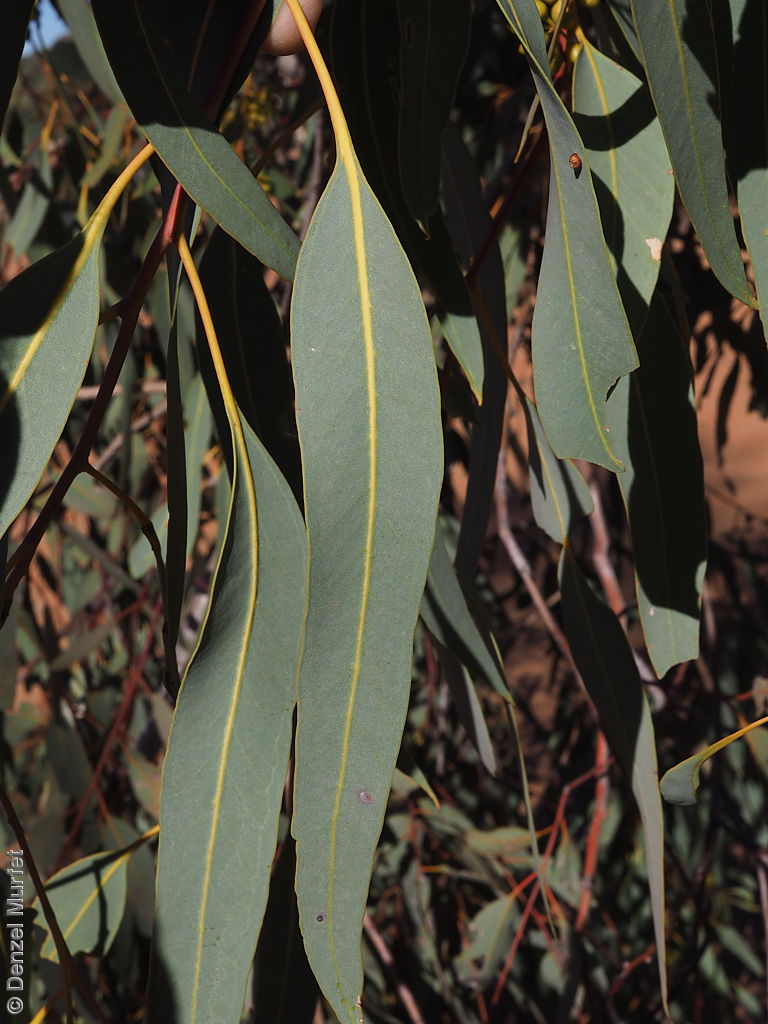
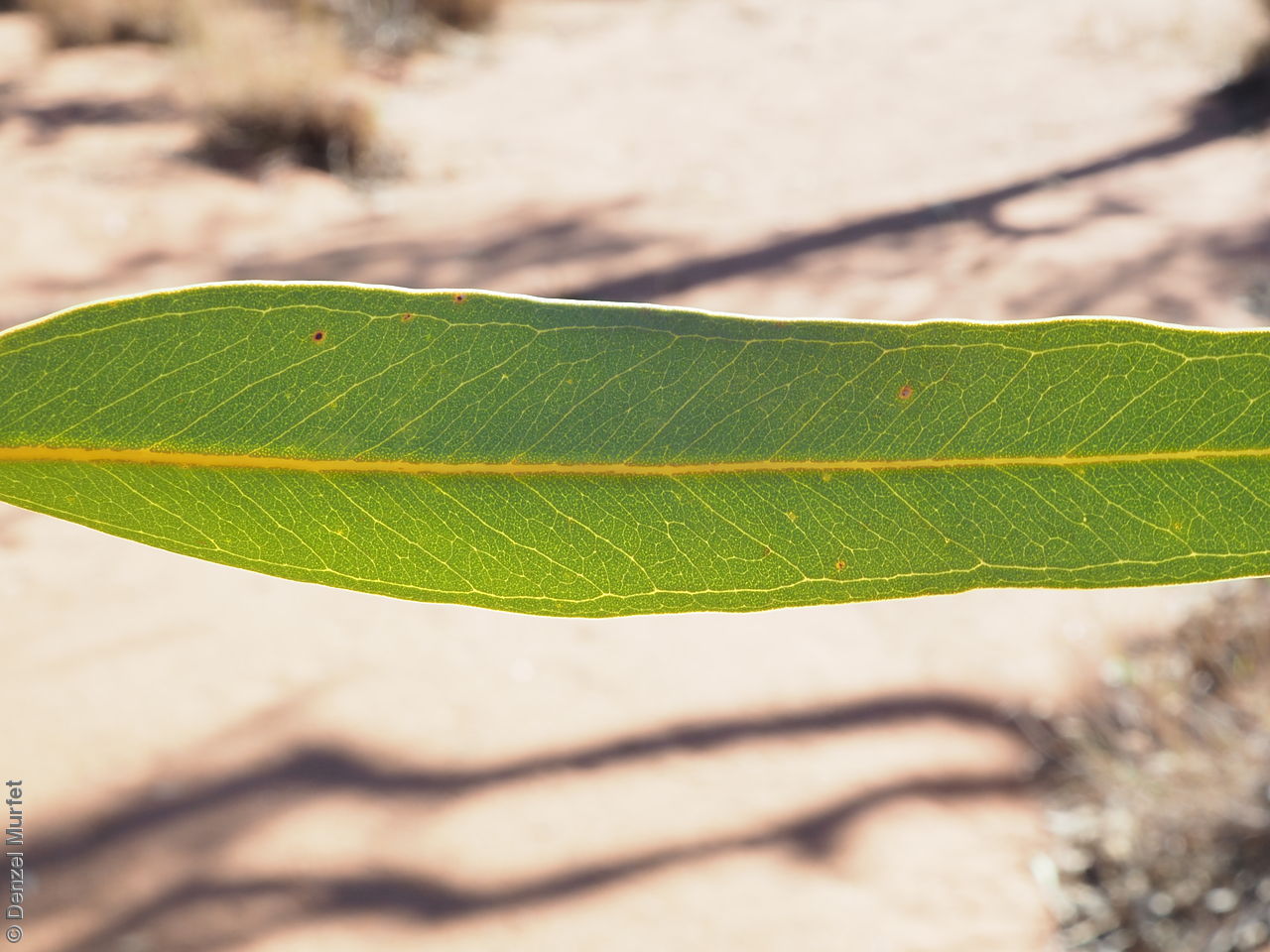

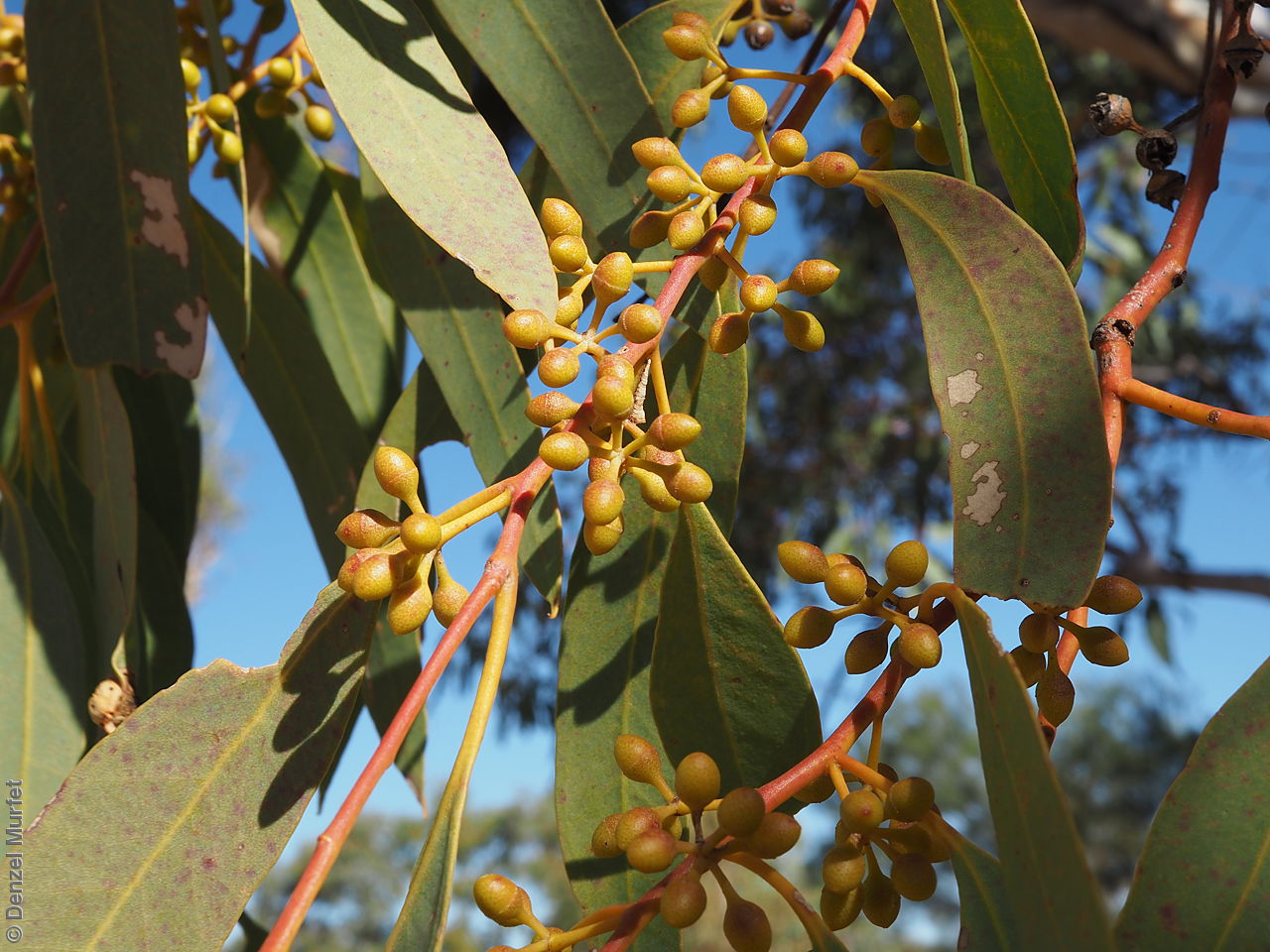
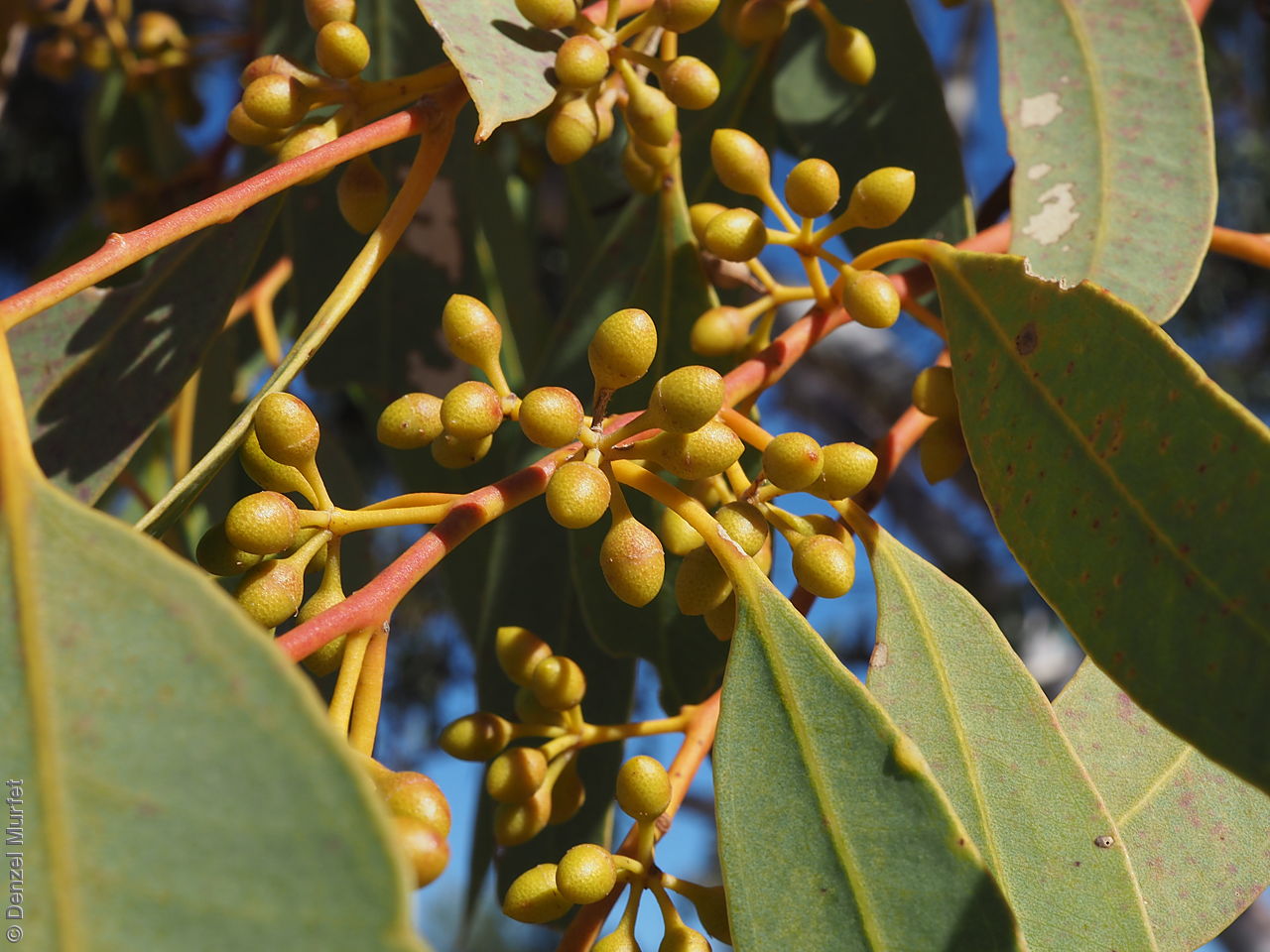




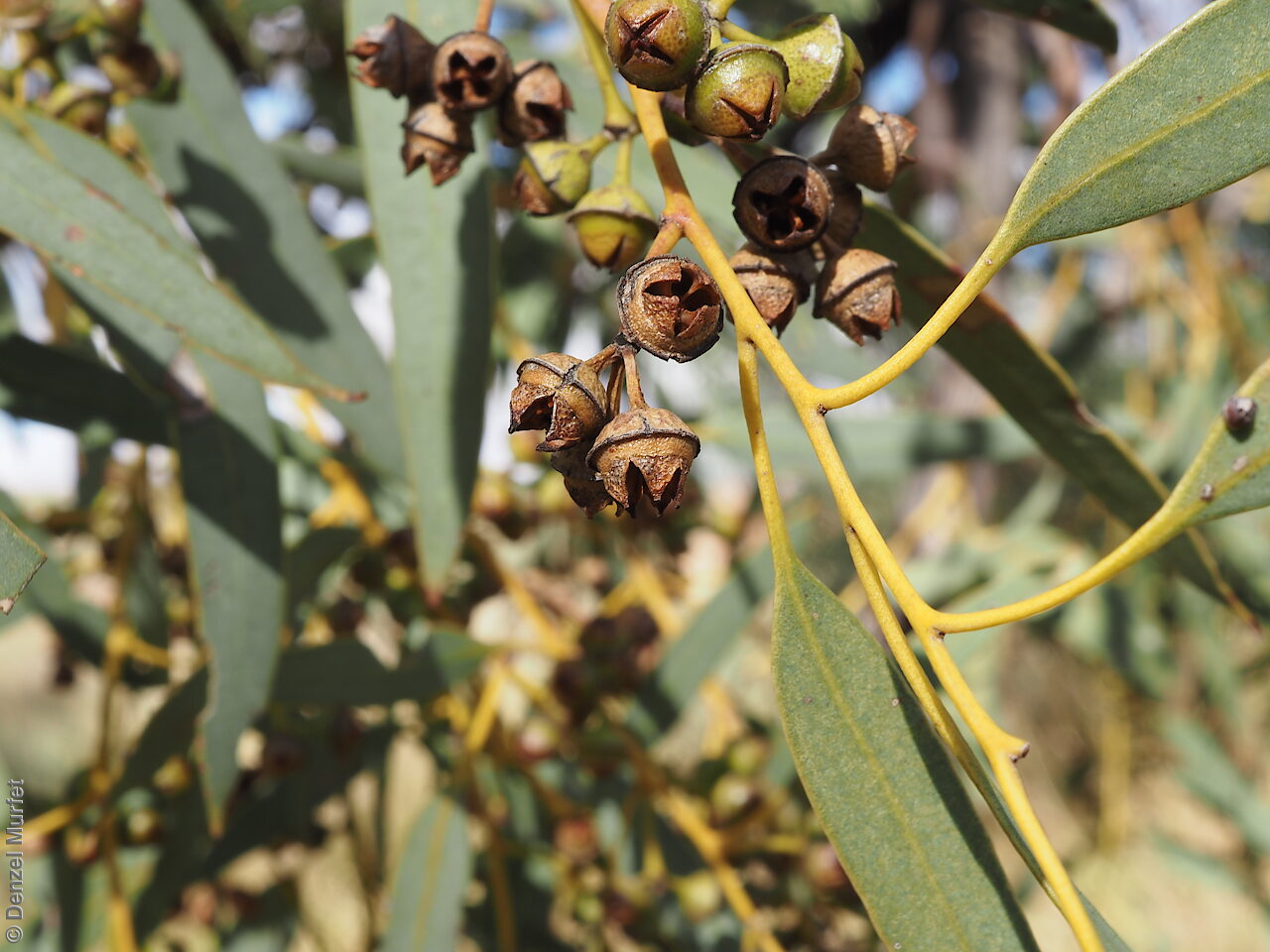
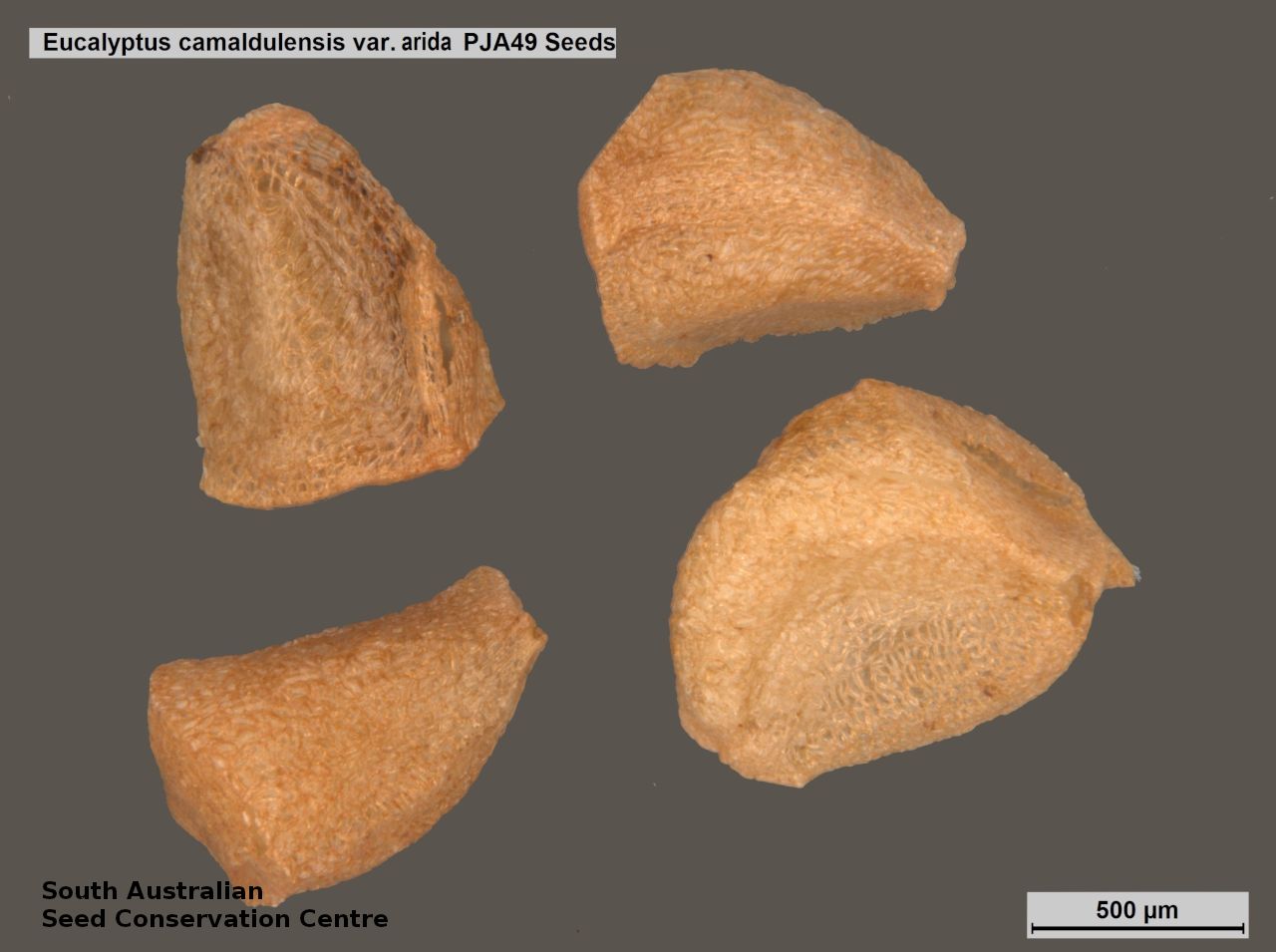

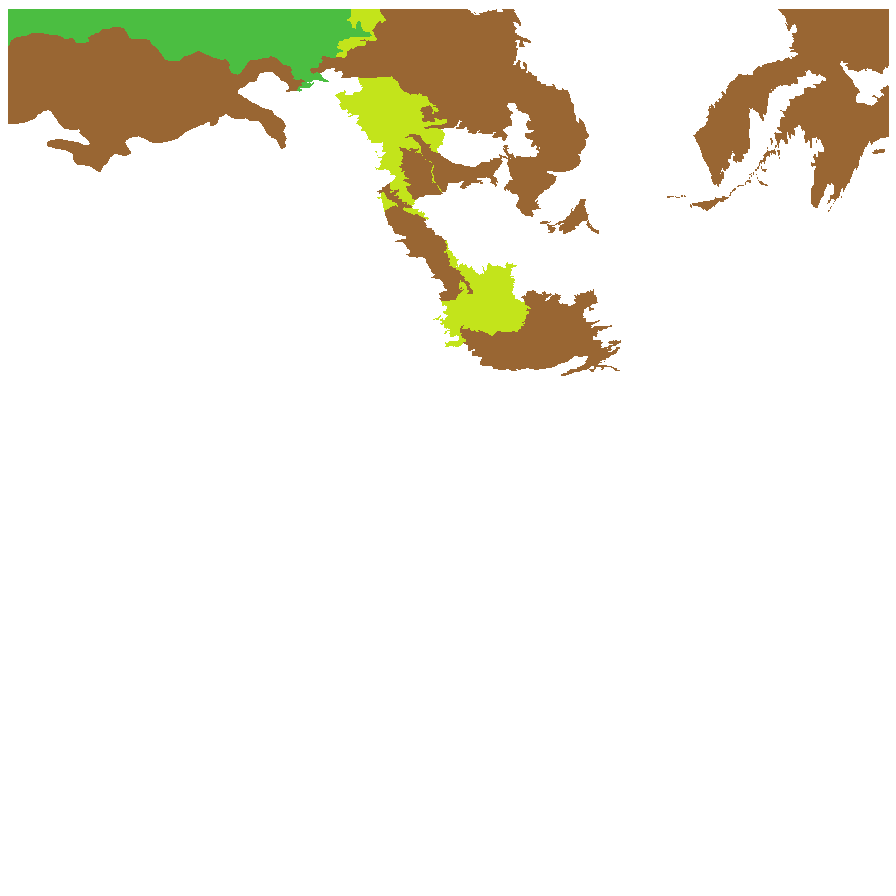
Botanical art
Prior names
Eucalyptus rostrata, partly
Eucalyptus camaldulensis var. obtusa, partly
Common names
Inland River Red Gum
Northern River Red Gum
It#ar#ta (P)
Etymology
Eucalyptus from the Greek 'eu' well and 'calyptos' covered; alluding to the cap or lid which covers the stamens in the bud. Camadulensis named after an abandoned monastery in the district of Camalduli in Italy where a tree was grown from seeds collected from south-eastern Australia. Frederick Dehnhardt, Chief Gardener at the Botanic Gardens in Naples used material from this tree to describe the species in 1832. The exact collection location of the seeds is unknown. Arida from the Latin 'aridus' meaning dry or arid; referring to the distribution of the subspecies in arid interior of Australia.
Distribution and status
Found in the northern part of South Australia, growing along creeks and on floodplains. Also found in Western Australia, Northern Territory, Queensland and New South Wales. Native. Common in South Australia. Common in the other states.
Herbarium regions: North Western, Lake Eyre, Gairdner-Torrens, Eastern
NRM regions: Alinytjara Wilurara, South Australian Arid Lands
AVH map: SA distribution map (external link)
Plant description
Single stem tree to 28 m tall with smooth, variegated bark throughout. Juvenile leaves opposite initially, ovate to broad-lanceolate, pruinose, dull, blue-green to bluish. Adult leaves lanceolate to broad-lanceolate, to 230 mm long and 40 mm wide, dull, blue-green to bluish. Inflorescence axillary cluster with 7 creamy-white flowers. This subspecies differ from the other two subspecies found in South Australia by having the broad lanceolate to ovate juvenile leaves, dull green-green adult leaves, bud-cap that are rounded and not beaked and erect flower stamens. Flowering between October and February. Fruits are woody, hemispherical to ovoid fruit to 7 mm long and 9 mm wide, on individual slender stalk with ascending disk, valves 3-5 exserted above the rim. Seeds are orange-brown, irregularly shaped seed to 1 mm long and 0.7 mm wide. Seed embryo type is folded.
Seed collection and propagation
Collect seeds between December and April. One of the few eucalypt species that release their seed. As a result monitoring of mature fruits is necessary. Collect mature fruits that are dark and hard (difficult to break with a finger nail), with the valves un-open. Leave the fruits in a breathable container in a dry room for one to two weeks. This allows the valves on the fruit to open and release the seeds. Separate the seeds by placing all the materials into a bucket and shaking it to dislodge the seeds. Pass the material through a sieve to separate the unwanted material. The finer material will contain both seeds (soft) and frass (hard) usually distinguishable from each other but can be very similar in shape and colour. With finer sieves, the seeds can be separated from the frass but this is not essential for storage or propagation. Store the seeds with a desiccant such as dried silica beads or dry rice, in an air tight container in a cool and dry place. From one collection, the seed viability was high, at 95%. Seeds are non-dormant, viable seed should germinate readily. Germination 100% on 1% w/v agar, 8/16 dark/light, 20�C. See http://data.kew.org/sid
| Location | No. of seeds (weight grams) | Number of plants | Date collected | Collection number Collection location | Date stored | % Viability | Storage temperature |
|---|---|---|---|---|---|---|---|
| BGA MSB | 3,040 (6.8 g) 3,040 (6.8 g) | 5 | 1-Dec-2003 | PJA49 North Western | 1-Sep-2004 | +5°C, -18°C |
Number of plants: This is the number of plants from which the seeds were collected.
Collection location: The Herbarium of South Australia's region name.
% Viability: Percentage of filled healthy seeds determined by a cut test or x-ray.